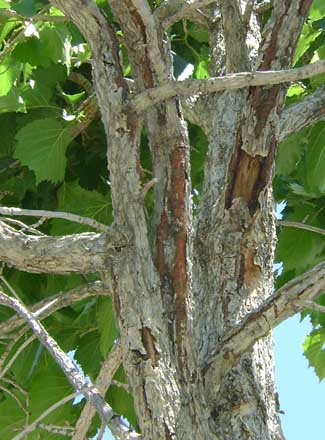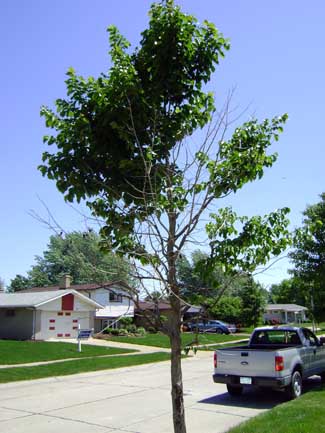Eastern filbert blight on Turkish filbert
Keep an eye on Turkish filbert trees for eastern filbert blight, a potentially deadly disease.

Eastern filbert blight is a disease of filbert and hazelnut trees (Corylus spp.) caused by a fungal pathogen (Anisogramma anomola), and is native to northeastern United States. In the wild, filbert blight causes a relatively minor disease on native American hazelnut shrubs Corylus americana, causing small cankers on the wood. However, in the introduced and commercially important European hazelnut Corylus avellana, the disease causes a highly lethal infectious disease of hazelnut orchards.

Recently, we observed Eastern filbert blight on Turkish filbert (Corylus corluna) trees planted as street trees in Southgate, Michigan, and on the Michigan State University campus. Turkish filberts are medium-sized trees with a strongly pyramidal crown form. They are relatively drought-tolerant and tolerant of alkaline soil conditions and are therefore widely recommended as street trees and ash replacements. In the earliest stages of infection, the pathogen will produce football-shaped stromata on new shoots (Photo 1). Later symptoms of filbert blight on Turkish filbert include branch dieback (Photo 2) and orange cankers on branches (Photo 3).

Over time, the disease can cause enough die-back that trees will need to be removed. The best management strategy is to scout regularly and prune out affected branches. Branches that are removed should be destroyed.
For more information, see the Eastern Filbert Blight fact sheet from the University of Wisconsin-Madison Extension.



 Print
Print Email
Email



